Quick Answers:
- Christmas cacti require more frequent watering than other cacti species, but be careful not to overwater them.
- There are three types of Christmas cacti, each with similar care requirements.
- Pot your Christmas cactus in a container with proper drainage and use a well-draining soil mix.
Christmas cacti are not difficult to care for, but they do require more frequent watering than other species of cacti. That said, be careful not to overwater the plant, as it can cause damage.
Keep reading to learn how often to water a Christmas cactus.
What is a Christmas Cactus?
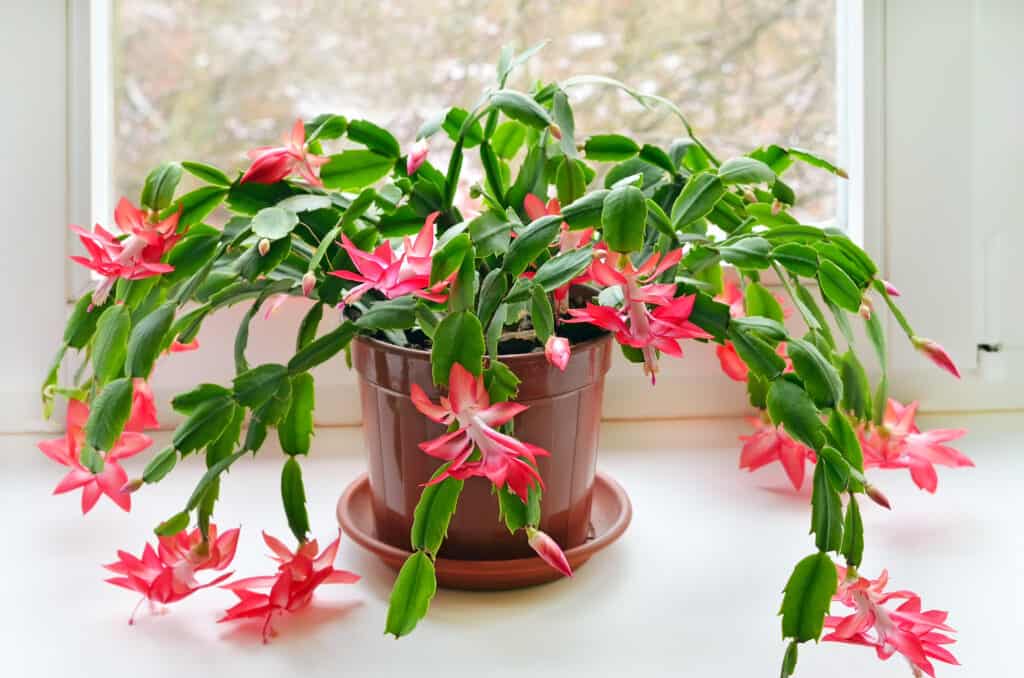
is a popular plant, not only during the holiday season but all year round.
©iStock.com/Nadezhda_Nesterova
The Christmas cactus, scientifically known as Schlumbergera bridgesii, is a popular houseplant due to its vibrant colors and ease of care. It is a member of the cactus family, with succulent leaves that resemble a leafy vine. Its striking pink, purple, or white blooms appear during the winter months, making it a festive addition to any home.
Overall, the Christmas Cactus is an ideal houseplant for those looking for a festive addition to their home. Its vibrant blooms and easy care make it a popular choice for any home.
Types of Christmas Cactus
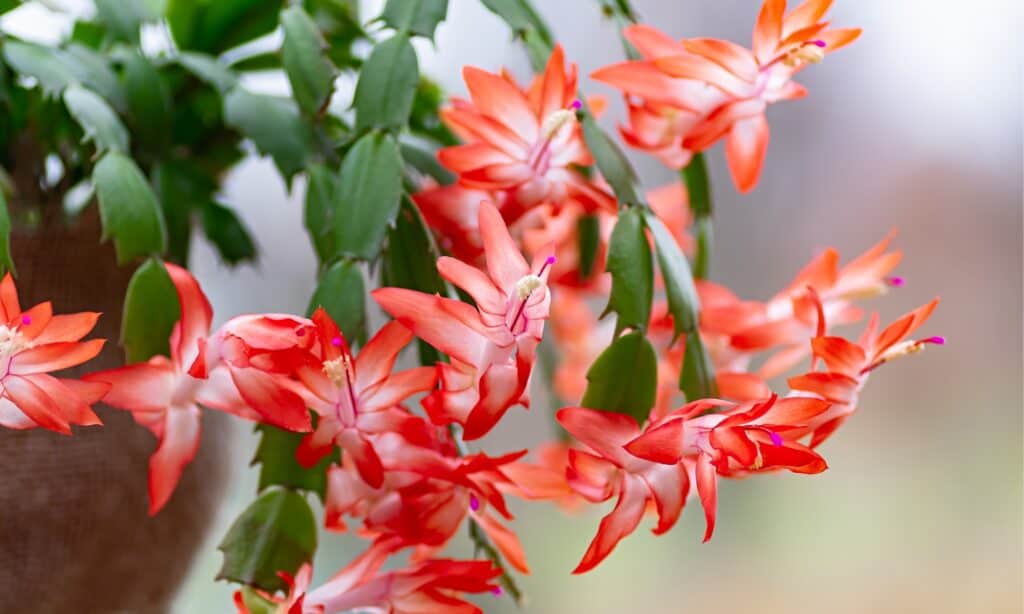
The Thanksgiving cactus blooms slightly earlier in the year compared to the Christmas cactus.
©iStock.com/Elena Grishina
When it comes to holiday cacti, there are three prominent types that often adorn our homes during festive seasons.
- Easter cactus (S. gaertneri) – The Easter cactus, scientifically known as Schlumbergera gaertneri, is a captivating plant native to Brazil’s coastal mountains. Its vibrant blooms typically grace our homes around the time of Easter celebrations. Unlike its counterparts, this variety possesses flattened stems with rounded edges and delicate spines.
- Thanksgiving cactus (S. truncata) – The Thanksgiving cactus showcases its stunning blossoms just in time for Thanksgiving festivities in late fall. This particular type hails from Brazil’s southeastern rainforests and boasts distinctively pointed stem segments with slight serrations along their margins.
- Christmas cactus (S. x buckleyi) – The Christmas cactus adds a touch of elegance during the winter holidays. Originating from southeastern Brazil’s cool mountainous regions, this hybrid cultivar combines traits from both S.gaertneri and S.truncata varieties. With flattened stem segments featuring more pronounced serrations compared to its relatives, it bursts into beautiful displays of color right when we celebrate Christmas.
While each species has its unique characteristics, for simplicity’s sake, we will collectively refer to them as “Christmas cacti” throughout this article due to their similar care requirements.
How Often Do You Water a Christmas Cactus?
Plan to water your Christmas cactus every two to three weeks, but only when the top one-third of the soil is dry. Soak the soil until water runs out of the drainage holes, and place a tray underneath the pot to catch any excess. Discard any leftover water after 10-15 minutes, and be sure to give your Christmas cactus plenty of water when it is flowering.
Symptoms of Overwatering
- If your Christmas cactus loses its blossoms, it could be a sign of stress caused by too much light, a sudden change in temperature, not enough water during bud formation, or overwatering.
- Additionally, overwatering can cause the plant to be vulnerable to mealy bugs and root rot. If you experience any of these issues, cut away any infected parts and repot the plant in fresh soil.
How to Pot Your Christmas Cactus
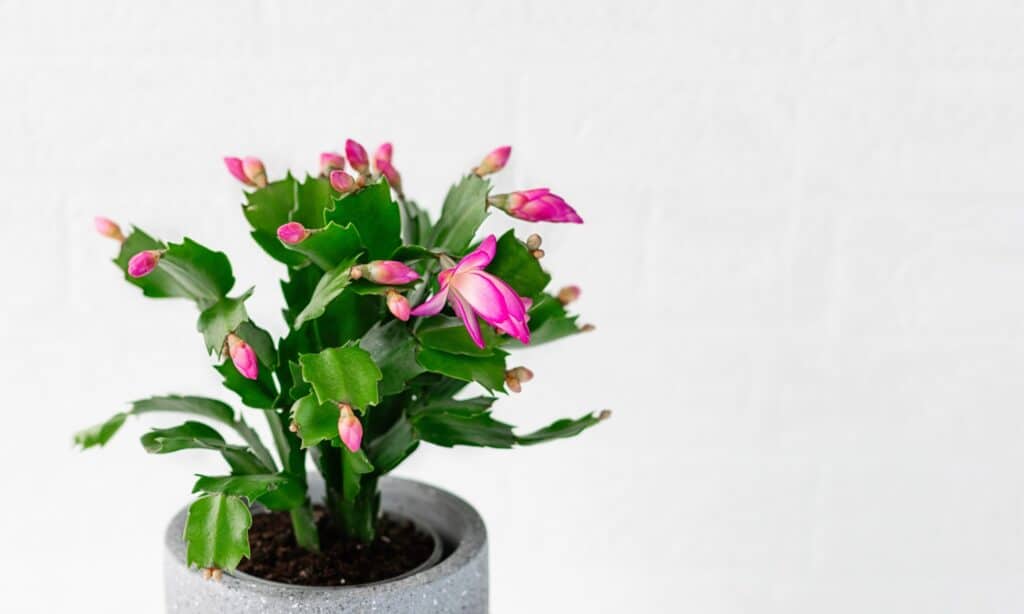
The Thanksgiving cactus makes a great gift and is easy to propagate.
©iStock.com/Elena Grishina
When picking a container for your Christmas cactus, make sure it has a hole in the bottom for water to drain. A succulent potting mix is suitable for the plant as long as it is capable of draining water properly.
When it comes to potting your Christmas cactus, it is crucial to create an environment that closely mimics its natural habitat. These cacti thrive on the forest floor, so providing them with acidic and well-draining soils is essential for their overall health and growth. To achieve this ideal soil composition, use a combination of a cactus mix along with perlite, vermiculite, and orchid bark.
Light, Temperature, and Humidity
- To take proper care of your Christmas cactus, place it in a spot that gets plenty of indirect light, such as an east-facing window or a bright bathroom. Direct sunlight may cause the leaves to become discolored, so it’s best to avoid it.
- For optimal growth, maintain a daytime temperature of 70°F and a lower temperature at night of 60-65°F.
- Christmas cacti thrive in moist air conditions, so a bright kitchen or bathroom is an ideal location for them. During the summer, they can be placed in a shaded area of the garden or an unheated porch as long as temperatures don’t drop below 50°F.
- Avoid placing your Christmas cactus in direct sunlight outdoors.
Feeding, Pruning, and Propagating
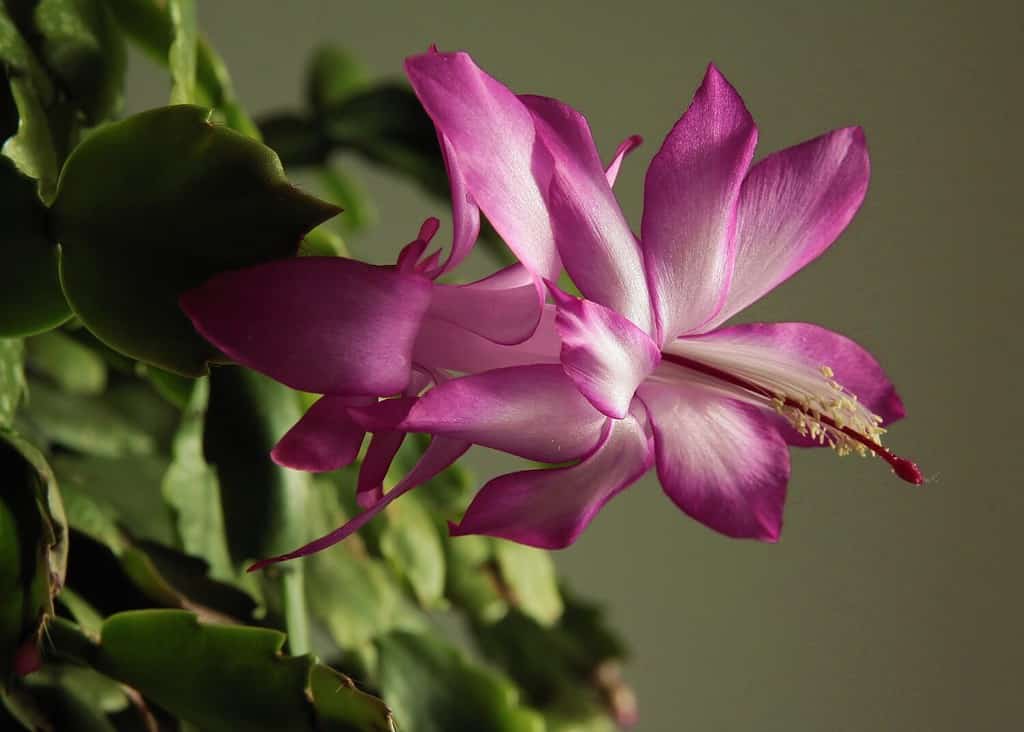
Tomato fertilizer works really well for
Schlumbergera.
©Brzostowska/Shutterstock.com
From the spring to early autumn, fertilize your Christmas cactus every two weeks with a balanced houseplant food. During the fall and winter months, fertilize it monthly to promote blooming.
Prune the plant in late spring to encourage growth and more flowers. Cut off a few sections of the stem and place the cut pieces in moist potting soil, which will help them root in a few weeks. Free plants make the best gifts!
How to Stimulate Your Christmas Cactus to Bloom
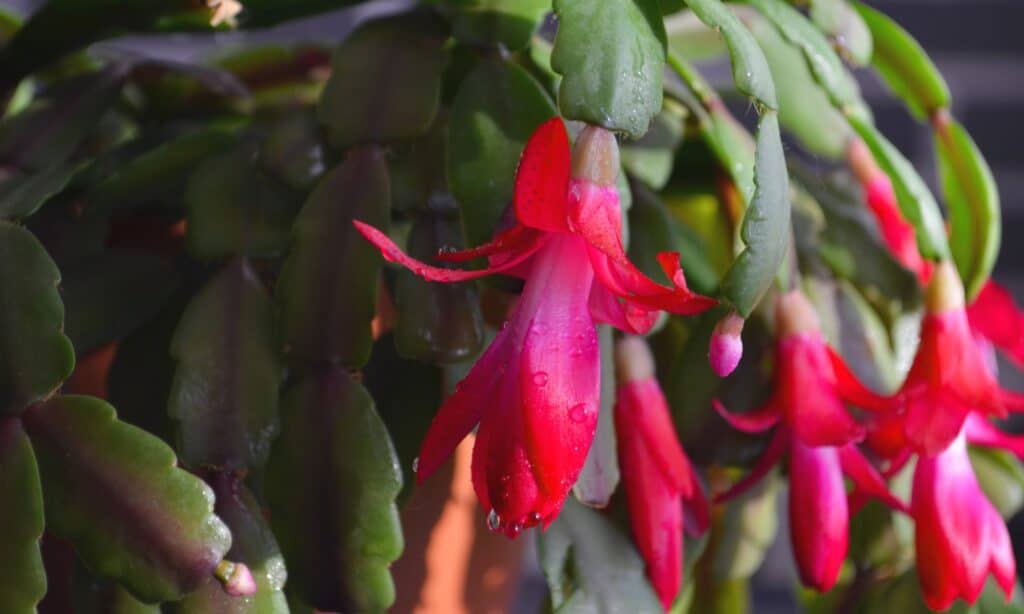
Christmas cacti bloom in late fall and early winter, right around the holidays.
©iStock.com/yes
If you want to get your Christmas cactus to bloom, make sure it isn’t exposed to too much light or too high temperatures. The blooming of this plant is triggered by the cooler weather and longer nights of fall, so following these tips can help you get the desired results!
- To make your Christmas cactus bloom, you need to have a consistent light cycle of 14 hours of night and 8-10 hours of day for a period of six weeks. If the plant is exposed to artificial lighting at night for longer than this, it will not bloom. For an indoor solution, cover your plant with a towel after it has received 8 hours of daylight.
- Flower buds will develop best when the plant is kept in a temperature range between 50 and 60°F.
- To promote blooming, expose your Christmas cactus to temperatures of around 45°F (not colder!) for a few nights consecutively.
- Keep up with watering while the plant is flowering. Otherwise, it may lose its buds. If buds fall off one year, don’t fret, the cactus should bloom again the following year!
Are Christmas Cacti Toxic to Dogs and Cats?
Christmas cacti are generally safe for both cats and dogs and not toxic, according to the ASPCA.
The sharp thorns on the cacti can be a hazard, however, and can cause irritation if a pet were to come in contact with them.
12 Critical Care Tips
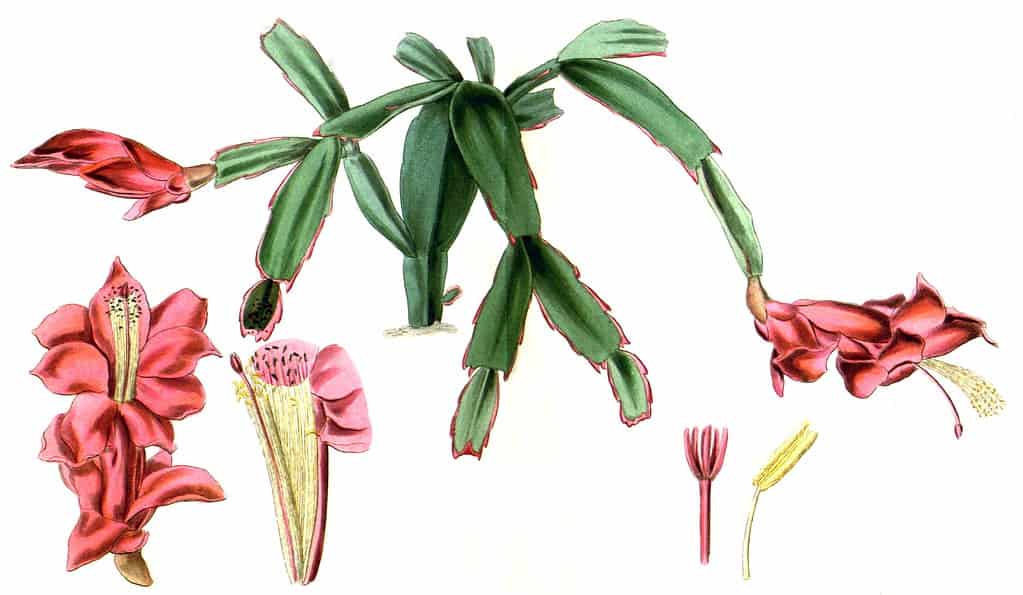
©Hooker, William Jackson, SirBlackwood, William, publisher; Cadell, Thomas, publisher; Swan, Joseph, engraver, Public domain, via Wikimedia Commons – Original
- Fertilize your cactus with a balanced liquid fertilizer. Tomato fertilizer works great. Use 1 Tablespoon per gallon of water every two weeks in spring and summer.
- These cacti prefer soil that is similar to the environment on the forest floor; it should be slightly acidic and have good drainage. To achieve this, mix together cactus soil with perlite, vermiculite, and orchid bark.
- Make sure you place your cactus in bright, indirect light. East or West windows are ideal.
- Keep the temperature between 65-70°F.
- Never let your Christmas cactus be exposed to temperatures below 40°F.
- Trim off any dead or damaged leaves.
- Move the plant to a brighter location 8-10 weeks before you want it to bloom.
- To stimulate blooms, give them short days and long, cool nights. Ideally, 14 hours of darkness at 50-55°F for 6-8 weeks.
- Repot the plant in fresh soil every 3-5 years. They like to be a bit potbound, so don’t be too hasty.
- Increase the humidity levels around your plant by misting regularly or placing it over a dish of water.
- Keep the soil slightly damp but not soggy to encourage blooming.
- Let the top one-third of the plant dry out before you water it.
Thank you for reading! Have some feedback for us? Contact the AZ Animals editorial team.








